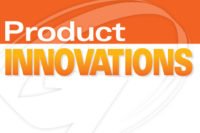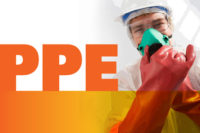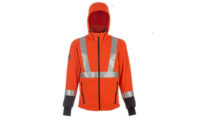Product labels are a direct indication that a garment meets the respective standards. In the flame-resistant garment industry, there are three key standards that establish legitimate claims:
• National Fire Protection Association (NFPA) 2112, Standard on Flame-Resistant Garments for Protection of Industrial Personnel Against Flash Fire
• ASTM International Standard Performance Specification F1506 for Flame Resistant and Arc Rated Textile Materials for Wearing Apparel for Use by Electrical Workers Exposed to Momentary Electric Arc and Related Thermal Hazards
• NFPA70E, Standard for Electrical Safety in the Workplace
Manufacturers can only label their products as compliant when they have met all the requirements of the individual applicable standard. This is why the label is a key demonstration of compliance and way of communicating that the garment is flame resistant and will provide a minimum level of protection.
Specific compliance statements
In both NFPA 2112 (flash fire protection) and ASTM F1506 (electrical arc protection), specific requirements are set for the content of the label. In addition to the typical information identifying the product (manufacturer name, model number, size, fabric composition, etc.), each standard requires a specific statement for indicating the respective garment is compliant with the standard. For NFPA 2112, this statement is quite specific and entails the following language:
THIS FLAME-RESISTANT GARMENT MEETS THE REQUIREMENTS OF NFPA 2112, STANDARD ON FLAME-RESISTANT GARMENTS FOR PROTECTION OF INDUSTRIAL PERSONNEL AGAINST FLASH FIRE, 2012 EDITION.
A simpler statement is specified for ASTM F1506 compliance:
MEETS REQUIREMENTS OF PERFORMANCE SPECIFICATION ASTM F1506
| To read more about flame resistance, CLICK HERE. |
Understanding HRC ratings
When it comes to NFPA70E for electrical protection, several manufacturers make claims with respect to garment compliance. Unlike either NFPA 2112 or the more applicable ASTM F1506, NFPA70E is not a product standard. Instead, it is directed at the end user and specifies the use of “appropriate” personal protective equipment, including flame- and arc-resistant garments. As such, NFPA70E provides a system for classifying the garment’s arc rating according to five hazard/risk categories or HRCs. It also requires that the flame-resistant garment meets the requirements of ASTM F1506.
These HRC levels are a convenient and easy way for employers to know what their employees should be wearing while performing specific jobsite tasks. Flame-resistant garments do not meet NFPA70E; rather these garments are classified by which HRC rating they received within the NFPA70E ranking system and therefore are appropriate for certain applications.
For a garment to meet the NFPA 2112 standard and claim compliance, the product has to be certified by a qualified, independent third-party certification organization. To indicate this requirement has been met, a mark should appear on the certification mark of the product label. This mark proves that the garment is certified to the standard, has been extensively reviewed, and that there is an ongoing process of review for maintaining that certification.
Periodic audits of the manufacturer quality control procedures and records as well as follow-up testing ensure that all products manufactured continue to meet the requirements of the NFPA 2112 standard. Some manufacturers claim that their products “meet” NFPA 2112, but the reality is that flame-resistant garments can only be certified to NFPA 2112 and must have the mark of a legitimate, qualified certification organization. (NFPA 2112 requires the certification organization to be accredited and all laboratory test capabilities to be separately accredited.) The use of “recognized components” or materials is not sufficient for a garment manufacturer to attain certification of their products.
Other important info
Other information provided on the product label includes details on how the garment should be laundered. Instructions on washing, preferred drying conditions, and details on prohibited agents and processes (such as use of bleach and fabric softener or dry-cleaning garments) must be followed in order to maintain the protective qualities of the garment and ensure continued protection. The NFPA 2112 standard requires the product label itself undergo 100 laundering cycles to ensure longevity and legible label print. Nearly all garments eventually wear out, but if properly maintained, these garments not only remain safe but will last longer.
Under NFPA 2112, warning labels indicate the intended uses of the garment, but more importantly, they also showcase any limitations for use of the garment. For example, while garments are intended for short-term high-energy exposure from flash fire or electrical arcs, these garments are not appropriate for continuous high heat exposure as might occur during firefighting. It’s up to the employer to perform a risk assessment to determine the sustainability of the garment for their expected use.
All garment product labels must also include some form of tracking information such as a lot number or manufacture date. This information allows garments to be tracked after they have been sold in case of any possible safety issues that might be discovered after the sale.
A thorough read is worth it
While the label on a flame-resistant garment may seem to be a small part of the overall product, it is an essential way of communicating important information and ensuring workers are protected in garments. If encountering arc or flash fires is inevitable, there’s no time for cutting corners. And when it comes to saving a life with a thorough read — it’s always worth it.



